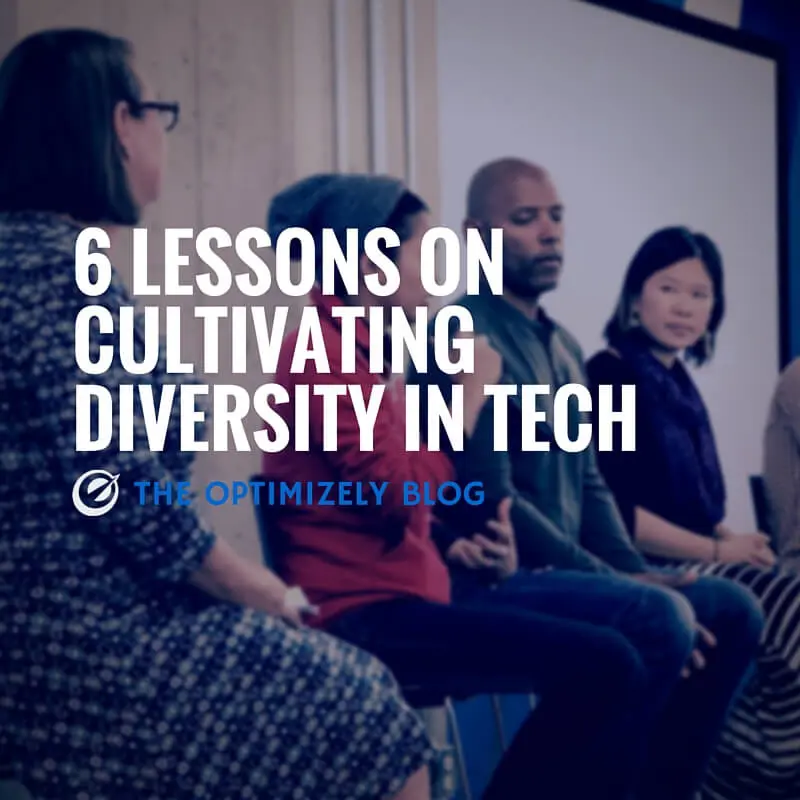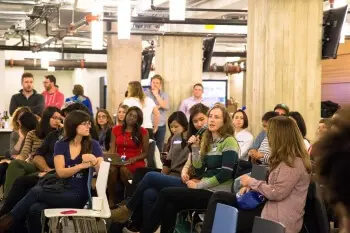6 Lessons on cultivating diversity in tech
When I was in high school, I was really interested in becoming a software engineer. But when I discussed my computer science aspirations with one of my favorite teachers, she told me that I was “too social” to sit in front of a computer all day. After giving it some thought, I agreed.

I wound up majoring in biomedical engineering. After two-and-a-half years working in my chosen field—and not loving it—I realized that I had to give programming a try. I studied web development for three months at App Academy, a programming school, and joined Optimizely as a software engineer shortly thereafter. I couldn’t believe it! I finally had a job as a software engineer.
Not long after starting, I joined our Diversity Community of Practice. As someone who took a more untraditional road to becoming a software engineer, I was really excited to be working with other people who thought about diversity and inclusion intentionally. I know firsthand how our own preconceived notions can impede us in the pursuit of our passions. The truth is, there’s no single “right” or “best” way to become a programmer or build an engineering team. I wanted to pay this message forward.
I decided to plan a panel discussion at Optimizely and invite people with experience fostering inclusive teams to share their advice. Interest and turnout was incredible! Over 100 attendees came together for this inspirational and sold out event. Clearly, San Francisco is thirsty to discuss this topic.

Left to Right: Erin Flynn, Dominique DeGuzman, Leslie Miley, Jenny Lin, Anthony Velázquez, Jennifer Dennard
Our panelists included:
Dominique DeGuzman, software engineer at Twilio; Anthony Velázquez, engineering manager at Lyft; Jenny Lin, engineering manager at Optimizely; Leslie Miley, an engineering leader that most recently headed the Product Safety Engineering Team at Twitter; and Jennifer Dennard, who leads culture and diversity initiatives for Medium.com.
All of the panelists have impressive track records advocating for diversity and inclusion in Silicon Valley and beyond.
Erin Flynn, Optimizely’s very own VP of People and Places moderated the panel.
The discussion covered a lot of ground and truly inspired me. Here are a few lessons and anecdotes that really resonated with me. You can also watch the full discussion in the video below.
1.Diversity is the raw materials, inclusivity is what you do with it.
Jennifer helped us all think about this important distinction. While building a diverse team is a great start, fostering an inclusive environment means giving everyone a voice.

Cultivating Diversity in Tech panel discussion
2. Letting go of “the bar.”
Leslie told the group that he often hears executives say that while diversity is important they’re not willing to “lower the bar”. However, what this fails to consider is that by the time a candidate from an underrepresented minority is in front of you in an interview, chances are they’ve exceeded the bar.
Anthony added that he will often get in touch with candidates who didn’t make it through the interview process, offering them additional resources to help them succeed in the future. He said that oftentimes access to the right preparatory materials can be all that stands in the way of a candidate and a job opportunity.
3. Allies can empower us to speak up and advocate for ourselves.
Jenny shared a story about a meeting during which a colleague made a comment that was insensitive toward women. In response to this comment, a straight, white, cisgendered male spoke up to voice his offense over this comment. This was a real “aha” moment for Jenny, who thought, “if he can speak up, why can’t I?”

Q&A at the Cultivating Diversity in Tech panel at Optimizely.
4. Don’t let others define what you can do.
Dominique inspired me with a story about her pre-software engineering days, when she was still working in IT. Part of her job involved lifting desktop computers and other equipment. In passing, a male coworker told her not to lift heavy computers since, being pretty, she could have someone else do it for her. Her response? Doing squats with the desktop.
5. To make others feel included, listen, be aware of your own biases, and consider adopting the “Kanye Rule.”
Jennifer told the group that simply listening is a major first step in making others feel heard and included. Dominique shared a great strategy adopted at Twilio, the “Kanye Rule”- don’t interrupt anyone talking, or risk being labeled “Kanye”! Jenny also discussed being aware of our own unconscious biases, encouraging the group to use individuals’ capabilities—not their gender, ethnicity, race or orientation—to get to know them.
6. Be yourself.
Many of the panelists talked about the importance of bringing your whole self to work, and how being yourself should not come at the expense of fitting in. Jenny talked about working on an all male team and feeling like she needed to share her coworkers’ hobbies, such as gaming, to fit in.
Leslie talked about how early in his career he would go well beyond the call of duty because he felt like he had something to prove, but soon realized that just because his background wasn’t “traditional” didn’t mean he had any less of a right to be there. Our moderator Erin also shared that whenever she would interview for a new job, she would always mention her wife to ensure–right from the start–that she was joining an inclusive work environment.
On a personal level, I found the panel so inspiring and educational. I learned many strategies to help others—and myself—feel included at work, and I hope you too feel empowered by our panelists’ experiences and advice as well!
I hope that through listening to our speakers stories, others can realize that no matter who they are or how they ended up in tech, they belong there and have the power to make an impact.
